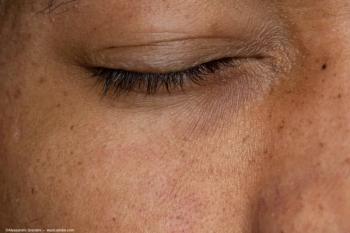
Vitamin B and choline supplementation are neuroprotective in glaucoma models
Key Takeaways
- Oral B6, B9, B12, and choline supplementation showed neuroprotective effects against glaucoma in animal models.
- Metabolic dysfunction in the retina and optic nerve occurs before retinal ganglion cell neurodegeneration in glaucoma.
Swedish researchers reveal that vitamins B6, B9, B12, and choline offer neuroprotection against glaucoma, highlighting potential new treatment avenues.
Swedish researchers, led by senior author James R. Tribble, PhD, reported that oral B6, B9, B12, and choline were neuroprotective against
No neuroprotective therapies are currently available to treat glaucoma, and discovery is complicated by the disease's complexity, the investigators commented.
“Recent work has identified metabolic dysfunction in the retina and optic nerve occurring prior to detectable neurodegeneration of retinal ganglion cells (RGCs) in glaucoma (via transcriptomic and metabolomic analyses), presenting the potential for neuroprotection prior to the initiation of neurodegenerative cascades. Loss of mitochondrial function and transport in RGCs,2,3 reduced energy capacity,4 loss of the ability to maintain nicotinamide adenine dinucleotide,5,6 and the depletion of alternative energy sources7,8 have all been identified early [on] in glaucoma in human patients and animal models,” they explained.
The authors cited studies whose data showed that elevated levels of homocysteine were associated with major diseases such as cardiovascular disease, diabetes, and Alzheimer disease, although this is typically in the form of hyperhomocysteinemia, where homocysteine is elevated in the blood.9 In addition, results from small studies in humans have suggested that homocysteine may be elevated in the blood and aqueous humor of certain glaucomas.10 Mouse models of hyperhomocysteinemia present significant retinal degenerative phenotypes, including vascular compromise and RGC degeneration.11-13 Supporting this, intravitreal injection of homocysteine in high concentrations can induce RGC death.14,15
Based on the data from those studies, Tribble and colleagues hypothesized that elevated homocysteine directly compounds RGC death in glaucoma and is related to dysfunction in one-carbon metabolism.
To determine this, they used mouse and rat models of ocular hypertension and retrospectively evaluated human epidemiologic data to investigate the effect of homocysteine and one-carbon metabolism, a pathway that transfers one-carbon units to molecules, and their impact on neurodegeneration.
Main study findings
“Our study [data] demonstrated that elevated homocysteine worsens glaucoma outcome in animal models, but this effect is mild. In humans, elevation of serum homocysteine has no detectable effect on glaucoma-related outcomes or disease progression. Early elevation of homocysteine in the retina is a marker of dysfunctional one-carbon metabolism, which we identify as an early and sustained feature of glaucoma. This is associated with dysfunctional regulation of genes and proteins that interact with key one-carbon metabolism cofactors and precursors: vitamin B6, B9, B12, and choline,” they reported.
Importantly, this supplementation of vitamin B6, B9, B12, and choline provided neuroprotection against the death of RGCs in acute, mild, and chronic animal models of glaucoma, including protection of visual function. This was independent of the IOP.
Tribble and colleagues believe these findings ultimately can be useful in the treatment of patients with glaucoma.
References
Tribble JR, Wong VHY, Stuart KV, et al. Dysfunctional one-carbon metabolism identifies vitamins B6, B9, B12, and choline as neuroprotective in glaucoma. Cell Rep Med. 2025;6(5):102127. doi:10.1016/j.xcrm.2025.102127
Tribble JR, Vasalauskaite A, Redmond T, et al. Midget retinal ganglion cell dendritic and mitochondrial degeneration is an early feature of human glaucoma. Brain Commun. 2019;1(1):fcz035. doi:10.1093/braincomms/fcz035
Quintero H, Shiga Y, Belforte N, et al. Restoration of mitochondria axonal transport by adaptor Disc1 supplementation prevents neurodegeneration and rescues visual function. Cell Rep. 2022;40(11):111324. doi:10.1016/j.celrep.2022.111324
Belforte N, Agostinone J, Alarcon-Martinez L, et al. AMPK hyperactivation promotes dendrite retraction, synaptic loss, and neuronal dysfunction in glaucoma. Mol Neurodegener. 2021;16(1):43. doi:10.1186/s13024-021-00466-z
Williams PA, Harder JM, Foxworth NE, et al. Vitamin B-3 modulates mitochondrial vulnerability and prevents glaucoma in aged mice. Science. 2017;355(6326):756-760. doi:10.1126/science.aal0092
Tribble JR, Otmani A, Sun S, et al. Nicotinamide provides neuroprotection in glaucoma by protecting against mitochondrial and metabolic dysfunction. Redox Biol. 2021;43:101988. doi:10.1016/j.redox.2021.101988
Harder JM, Guymer C, Wood JPM, et al. Disturbed glucose and pyruvate metabolism in glaucoma with neuroprotection by pyruvate or rapamycin. Proc Natl Acad Sci
U S A. 2020;117(52):33619-33627. doi:10.1073/pnas.2014213117Harun-Or-Rashid M, Pappenhagen N, Zubricky R, Coughlin L, Jassim AH, Inman DM. MCT2 overexpression rescues metabolic vulnerability and protects retinal ganglion cells in two models of glaucoma. Neurobiol Dis. 2020;141:104944. doi:10.1016/j.nbd.2020.104944
McCaddon A, Miller JW. Homocysteine–a retrospective and prospective appraisal. Front Nutr. 2023;10:1179807. doi:10.3389/fnut.2023.1179807
Xu F, Zhao X, Zeng SM, Li L, Zhong HB, Li M. Homocysteine, B vitamins, methylenetetrahydrofolate reductase gene, and risk of primary open-angle glaucoma: a meta-analysis. Ophthalmology. 2012;119(12):2493-2499. doi:10.1016/j.ophtha.2012.06.025
Ganapathy PS, Moister B, Roon P, et al. Endogenous elevation of homocysteine induces retinal neuron death in the cystathionine-beta-synthase mutant mouse. Invest Ophthalmol Vis Sci. 2009;50(9):4460-4470. doi:10.1167/iovs.09-3402
Tawfik A, Al-Shabrawey M, Roon P, et al. Alterations of retinal vasculature in cystathionine-beta-synthase mutant mice, a model of hyperhomocysteinemia. Invest Ophthalmol Vis Sci. 2013;54(2):939-949. doi:10.1167/iovs.12-10536
Yu M, Sturgill-Short G, Ganapathy P, Tawfik A, Peachey NS, Smith SB. Age-related changes in visual function in cystathionine-beta-synthase mutant mice, a model of hyperhomocysteinemia. Exp Eye Res. 2012;96(1):124-131. doi:10.1016/j.exer.2011.12.011
Moore P, El-sherbeny A, Roon P, Schoenlein PV, Ganapathy V, Smith SB. Apoptotic cell death in the mouse retinal ganglion cell layer is induced in vivo by the excitatory amino acid homocysteine. Exp Eye Res. 2001;73(1):45-57. doi:10.1006/exer.2001.1009
Chang HH, Lin DPC, Chen YS, et al. Intravitreal homocysteine-thiolactone injection leads to the degeneration of multiple retinal cells, including photoreceptors. Mol Vis. 2011;17:1946-1956.
Newsletter
Don’t miss out—get Ophthalmology Times updates on the latest clinical advancements and expert interviews, straight to your inbox.


















































.png)


